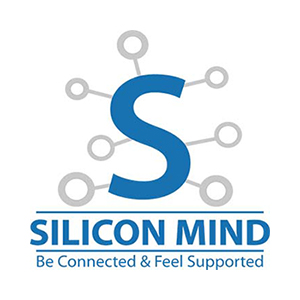In the dynamic realm of network technology, a revolutionary concept known as Software-Defined Networking (SDN) is gaining momentum as a transformative solution for businesses seeking to streamline and enhance their network infrastructure. This blog is your gateway to understanding the unprecedented benefits that SDN offers, paving the way for organizations to embrace agility, efficiency, and scalability in today’s digital landscape like never before. Join us on this journey of discovery as we uncover how SDN is reshaping networking paradigms and revolutionizing the way companies optimize their networks.
Understanding Software-Defined Networking (SDN)
Software-Defined Networking (SDN) represents a modern approach to network management. It ensures that operators can respond swiftly to changing business needs. Key features include programmability and the ability to manage network services through abstraction. Embracing SDN fundamentally transforms how networks are designed and operated, offering significant advancements over traditional networking methods.
Software-Defined Networking (SDN) Definition and Concept
SDN, or Software-Defined Networking, revolutionizes traditional networking. It separates the network’s control plane from the data plane. This separation allows centralized network management through software applications.
The approach enhances agility and flexibility. Network administrators can easily adjust traffic flow. SDN relies on programmable networking components. These components allow for real-time adjustments and optimization. By abstracting the physical infrastructure, SDN simplifies complex configurations. It supports dynamic and scalable network environments, making it ideal for modern IT needs.
Key Components of Software-Defined Networking (SDN)
SDN encompasses various critical components. The Application Layer contains network applications that communicate intentions. The Control Layer, or SDN controller, manages policies and traffic flow. The Infrastructure Layer includes network devices like switches and routers.
These devices execute instructions from the control plane. Northbound APIs provide communication between the application and control layers. Southbound APIs link the control layer to the infrastructure. Together, these components create a flexible, programmable network. This architecture enhances manageability and performance.
Enhanced Network Performance with SDN
Networks evolve faster with SDN. It boosts performance by optimizing traffic flow and reducing latency. The dynamic nature allows quick adaptation to changing demands. Enhanced bandwidth utilization ensures efficient data transfer.
Network resources get allocated more intelligently. This results in smooth and reliable operations. Moreover, automated systems minimize human errors, elevating overall efficiency.
SDN empowers businesses to scale their networks effortlessly. The adaptability of SDN handles increased traffic without compromising speed. Consequently, networks become more resilient and responsive.
Improved Network Scalability with SDN
SDN enables networks to scale efficiently. It separates control and data planes, allowing easier management. Network administrators can quickly adjust resources. This ensures the network can handle increased traffic loads seamlessly.
SDN’s programmable nature allows businesses to scale up or down as needed. It supports integration with various applications and services. This flexibility is crucial for growing enterprises. As a result, SDN delivers a scalable solution to meet dynamic business needs without compromising performance.
Optimized Network Traffic Management through SDN
SDN enhances traffic management by dynamically adjusting network flows. It allocates bandwidth based on real-time needs, preventing congestion. This ensures optimal performance during peak usage. Network policies can be programmed to prioritize critical applications.
SDN makes use of intelligent algorithms for efficient load balancing. This results in consistent user experiences and reduced latency. By centralizing control, SDN simplifies the process of managing complex networks. Consequently, businesses benefit from smoother operations and improved reliability.
Simplifying Network Management with SDN
Software-Defined Networking streamlines network control. It centralizes management tasks, making adjustments more straightforward. With SDN, administrators can automate routine functions, reducing manual intervention.
This leads to faster deployment of new services and applications. Real-time visibility into network operations is enhanced, ensuring prompt issue resolution. SDN also allows for more consistent configuration. These features collectively reduce complexity in managing large-scale networks. Consequently, businesses experience increased productivity and improved operational efficiency.
Centralized Network Control and Automation in SDN
SDN centralizes network control, making management tasks more straightforward. Administrators can oversee the entire network from a single interface. This centralization reduces the likelihood of configuration errors.
Automation of routine tasks, such as updates or policy changes, becomes simpler. SDN enables rapid response to network issues, minimizing downtime. Real-time adjustments are possible, enhancing overall network performance. This streamlined approach saves time and resources. Businesses benefit from increased operational efficiency and reduced complexity.
Streamlined Network Configuration and Monitoring using SDN
SDN simplifies network configuration by using centralized control. Network administrators can make changes quickly across the entire network. This reduces the need for manual configuration, saving time and reducing errors.
Monitoring is also more efficient with SDN. Real-time data provides insights into network performance and potential issues. Troubleshooting becomes easier and faster. The overall result is a more streamlined and responsive network. Businesses benefit from improved uptime and reliability.

When delving into the realm of Software-Defined Networking (SDN) and seeking a trusted collaborator to drive the transformation of your network infrastructure, Silicon Mind stands out as a premier partner. Our SDN solutions are meticulously crafted to elevate network performance, streamline operations, and foster innovation within your organization, laying the groundwork for a dynamic technological landscape. Leveraging Silicon Mind’s wealth of expertise in SDN implementation, we go beyond conventional practices to deeply understand your specific networking needs. Through bespoke consultations, we develop customized strategies tailored to align seamlessly with your business objectives, offering a comprehensive range of services from network design and optimization to security enhancements and virtualization solutions. This holistic approach ensures a seamless transition to an SDN environment that propels sustainable growth and operational excellence for your enterprise.
Connect with us today to initiate a collaborative journey aimed at realizing your SDN goals through expert guidance and unparalleled support. Don’t wait – reach out now to schedule a FREE consultation and embark on a path towards maximizing the benefits of SDN for your network infrastructure success evolution.
Cost-Efficiency Benefits of SDN Implementation
SDN helps reduce hardware costs. Traditional networks rely on expensive, specialized hardware. SDN eliminates this need by using software to manage network functions. This results in lower initial investment.
Furthermore, SDN lowers operational expenses. Automated processes replace manual tasks, cutting down on labor costs. Energy efficiency also improves, as SDN can optimize the use of resources.
Overall, SDN offers a cost-effective alternative to conventional networking. Businesses can achieve substantial savings while maintaining robust network performance.
Reduced Hardware Costs with Software-Defined Networking
Traditional networks require expensive, specialized hardware components. SDN, on the other hand, leverages cost-effective, general-purpose hardware. This change significantly reduces initial capital expenditure.
Additionally, software updates replace the need for frequent hardware upgrades. As a result, businesses save money on both procurement and maintenance. The ability to use existing infrastructure also minimizes waste. Overall, SDN provides a more economical approach to network management. It ensures high performance without the financial burden of traditional hardware investments.
Lower Operational Expenses with SDN Deployment
With SDN deployment, businesses experience a significant reduction in operational costs. Centralized network management simplifies administrative tasks. Network administrators can automate routine operations, saving time and labor.
Troubleshooting becomes more efficient, minimizing downtime. SDN also allows for remote management, reducing the need for on-site technicians. Additionally, energy consumption decreases due to optimized resource use. Overall, SDN provides a streamlined approach that cuts down on daily expenses, making network operations more cost-effective.
Strengthening Network Security through SDN
SDN significantly enhances network security. Centralized control enables rapid deployment of security updates. Threat detection becomes more effective with real-time monitoring. Network segmentation isolates threats, minimizing impact.
Automated responses to security incidents reduce human error. Additionally, SDN simplifies compliance with security policies. The ability to create virtual networks helps in isolating sensitive data. By providing granular access controls, SDN minimizes unauthorized access. Altogether, SDN offers robust measures to safeguard network infrastructures.
Enhanced Network Security Measures in SDN
SDN fortifies network security by centralizing control. This allows for swift deployment of updates and patches. Real-time monitoring enhances threat detection capabilities, making responses faster and more effective.
Network segmentation in SDN isolates potential threats, reducing their impact. Automation within SDN minimizes human errors, which can often lead to breaches. The system also enforces compliance with security policies effortlessly. Combined, these factors significantly bolster the overall security of any network infrastructure.
Implementing Access Control and Threat Detection with SDN
SDN significantly enhances access control and threat detection in network infrastructure. By centralizing control, SDN simplifies the implementation of security policies across the entire network. It enables the dynamic adjustment of access permissions, ensuring that sensitive data remains protected.
SDN can quickly identify and isolate threats, minimizing potential damage. Continuous monitoring and analytics within SDN provide real-time insights into network activities. This proactive approach ensures threats are addressed promptly, improving overall network security.
Conclusion
To sum up, embracing SDN offers numerous benefits. It enhances network performance and simplifies management. Cost-efficiency is another significant advantage. SDN strengthens security through advanced controls and threat detection.
This technology is paving the way for modern, agile, and robust network infrastructures. As organizations grow, adopting SDN will be essential for staying competitive and secure. Keeping an eye on future trends in SDN will help ensure continued network optimization and resilience.
Key Takeaways on the Benefits of Software-Defined Networking (SDN)
SDN offers numerous advantages for modern network infrastructures. It enhances network performance and scalability. Simplifying management is another key benefit, thanks to centralized control and automation. SDN also contributes to significant cost savings by reducing hardware and operational expenses.
Furthermore, it bolsters network security through advanced measures like access control and threat detection. In essence, SDN ensures flexible, efficient, and secure network environments. Organizations looking to stay competitive should consider SDN as a pivotal part of their strategy.
Future Trends and Considerations in Network Infrastructure Transformation
Advancements in artificial intelligence (AI) are set to revolutionize network management. AI-driven analytics will enable predictive maintenance and smarter resource allocation. Edge computing will become more prevalent, bringing processing power closer to data sources.
This reduces latency and improves real-time decision-making. The integration of 5G technology will further enhance network capabilities, supporting higher data speeds and better connectivity. Organizations must consider these trends for a future-proof network infrastructure. Keeping pace with technological innovations ensures long-term competitiveness and efficiency.
Read More


